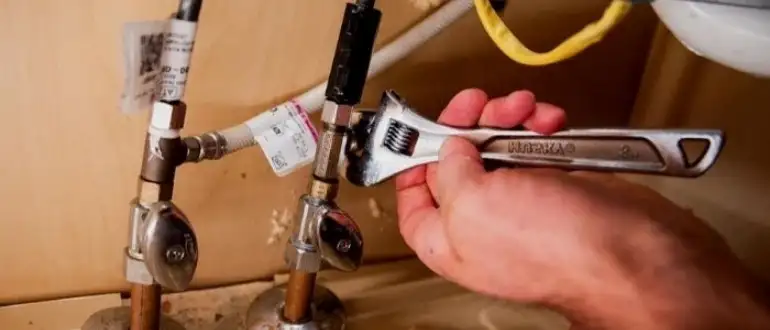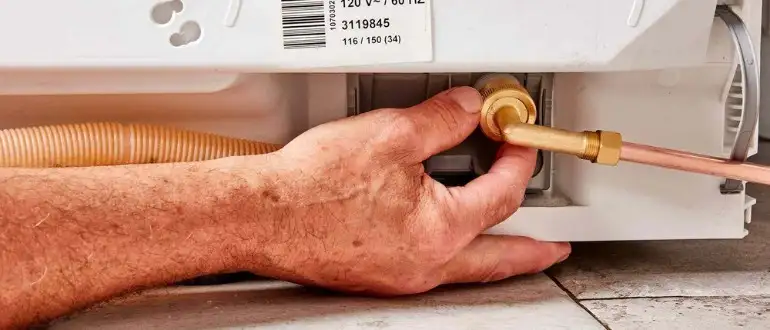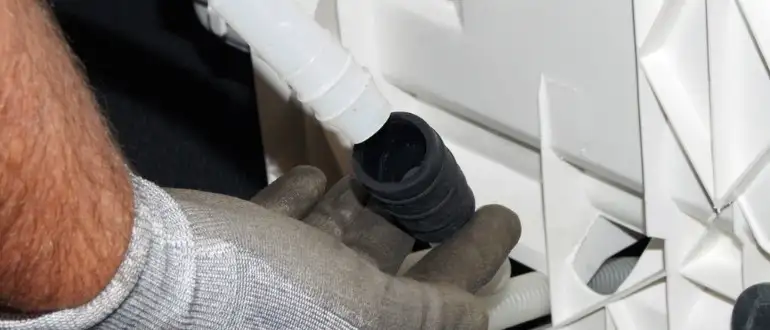People often get confused about how to connect a dishwasher to a water supply after buying a dishwasher for the first time.
Knowing how to connect a dishwasher properly is absolutely necessary to not go wrong in any way on the get-go.
Read this article thoroughly to understand how to properly connect your newly purchased Dishwasher.
How To Connect The Dishwasher To The Water Supply?
Though installing a dishwasher might seem very tricky if you are doing it for the first time, you can still connect your Dishwasher to your article by following this article.
There’s no way to go wrong with connecting the Dishwasher to the water supply.

However, it is also recommended to look at the user manual provided with that specific model.
The Dishwasher installation mostly has three significant steps: Power connection, water supply connection, and connecting the drain hose.
Before you connect your Dishwasher to the water supply, first you need to know what are the things you need to connect your Dishwasher to the water supply. They are:
Equipment/Tools Required:
Screwdrivers, adjustable wrench or channel lock pliers, Spade bit, and drills.
Materials required:
New dishwasher, Dishwasher connecting kit, Electric appliance cord, wire nuts, and pipe joint compounds.
Now you have the equipment and the materials required to connect the dishwasher. Now follow these steps accordingly:
Read the instructions, connect the water supply, connect the water supply line, position, connect the tube, and connect the drain hose.
Steps Of Connecting The Dishwasher To The Water Supply:
Remove The Wire Connector Housing’s Cover
Attach the green wire from the appliance cable to the green grounding screw, the white neutral wire to the white dishwasher lead, and the black hot wire to the black Dishwasher lead.
Twist-on wire connectors (wire nuts) are commonly used to make these connections.
However, other dishwashers may use a different approach. Replace the wire connection housing cover.
Connect the water supply:

Somewhere on the solenoid valve, look for the water inlet fitting.
Apply pipe joint compound to the dishwasher fitting’s threads before threading it onto the solenoid valve.
Tighten entirely by hand, then use channel-lock pliers or an adjustable wrench to tighten a further 1/4 turn.
Connect water supply line:
A braided steel water supply tube is provided with the Dishwasher connecting kit.
Tighten the supply tube coupling nut onto the dishwasher fitting with channel-lock pliers or an adjustable wrench.
This compression fitting eliminates the need for a pipe joint compound. It’s important not to overtighten the threads because this might damage the threads.
Positioning:
Turn the right-side-up of the Dishwasher. Connect the power wire, the water supply tube, and the drain hose through the slots in the sidewall of the cabinet to install the Dishwasher under the kitchen counter.
Place the Dishwasher in the middle of the center, but not too far back.
Follow the instruction manual to elevate and level the Dishwasher using the flexible legs.
If required, detach the legs with pliers to raise and level the Dishwasher to counter height.
Connect the tube:
Connect the water supply tube’s other end to the kitchen sink’s water supply shutoff valve.
(During a new installation, this shutoff valve may need to be installed on the hot water line.)
Check for leaks by turning on the shutoff valve. Check for leaks at the opposite end of the supply tube, where it connects to the dishwasher fitting, under the Dishwasher. If there are leaks in either area, adjust the fittings a bit further.
Connecting the drain hose:

The Dishwasher’s rubber drain pipe is generally attached. If not, a hose clamp can be used to seal it immediately.
Depending on the arrangement of your sink and local code requirements, the drain hose can be configured in a variety of ways:
Attach the dishwasher drain hose to the air gap fitting mounted on the sink deck or the top of the counter.
Due to this fitting, air enters the drain hose to prevent wasted water from being pumped back to the Dishwasher.
Another hose from the air gap runs to the nipple on the garbage disposal or on the side nipple on the sink drain.
The Dishwasher’s hose is generally attached to the air gap by a spring clip. In contrast, the hose connects the garbage disposer with the hose clamp.
The dishwasher drain hose may be coiled up and attached to the bottom of the counter, then lower down to connect to the trash disposal nipple or the sink drain tailpiece.
This “high loop” acts as an air gap, preventing water from being sucked back into the Dishwasher. This practice may, however, be prohibited by local laws.
FAQs On Connecting The Dishwasher With The Water Supply:
Does My Dishwasher Need Its Own Water Supply?
Yes, the Dishwasher has its own water supply. The Dishwasher needs hot water.
It’s essential to have its own water supply.
If you don’t have the necessary arrangements for water supply, then place the Dishwasher under the sink, as you will get the closest water source there.
Does My Dishwasher Need It’s Own Water Shut-Off Valve?
Yes, the dishwashers need their own water shutoff valve.
It is recommended to have its own shutoff valve in the kitchen sink, which is also obviously under the cabinet.
What Water Line Does My Dishwasher Need To Be Hooked Up?
Dishwashers should always be connected to the hot water line. Often the existing water pipe is hooked up to the wrong line.
However, make sure that the Dishwasher is hooked up to the correct water pipe.
Final words:
Finally, make sure you have all the necessary tools and material required for installation and read the instruction manual properly before beginning to install your dishwasher.
Read the instructions, and make the connections. Even though the power connection may seem complicated/tricky, it’s not something you can’t do.
Connecting the water supply is connecting the braided steel supply tube to the shutoff valve. Connecting the Dishwasher’s drain hose is also another easy plumbing task.
